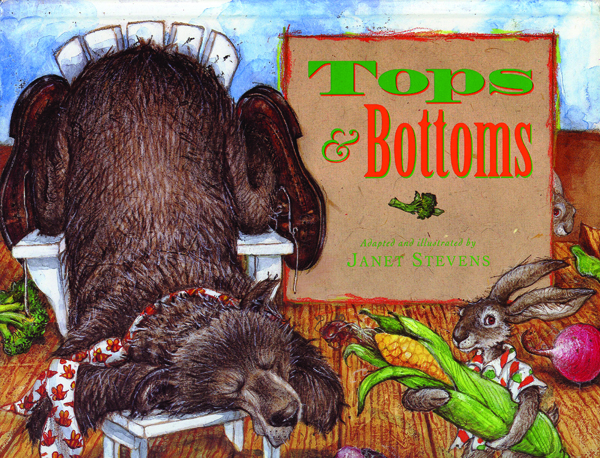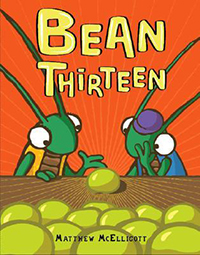 Relevancy and Engagement
agclassroom.org/sc/
Relevancy and Engagement
agclassroom.org/sc/
Lesson Plan
The Seed Match
Grade Level
Purpose
Students investigate where food comes from, the parts of plants that we eat, and the difference between fruits and vegetables. Grades K-2
Estimated Time
Materials Needed
Engage:
Activity 1: The Seed Match
- The Seed Match activity sheet
- Crayons or colored pencils
- Paper plates and paper towels
- Cutting utensil (for instructor only)
- Food plants for investigation (1 of each per student or pair of students): peanut (in the shell), small squash, apple, bell pepper, strawberry, kiwi, wheat (available for purchase), and an edamame pod (found most often in the freezer section at local grocers)
- Glue
Activity 2: Where Do They Grow?
- Tops & Bottoms by Janet Stevens
- Where Do They Grow? activity sheet
- Crayons or colored pencils
Vocabulary
fruit: the part of a plant that develops from the flower and contains the seeds of the plant
vegetable: any edible part of a plant that does not contain seeds
Did You Know?
- 90% of the plants on Earth are flowering plants.1
- Flowering plants produce fruits.1
- Seeds can stay dormant for a long time; the oldest known seed to sprout was more than a thousand years old.1
Background Agricultural Connections
Plants are an important part of our everyday lives. We need them to make oxygen, and they provide food and fabric so that we can have something to eat and something to wear. They also provide shelter, and they can even be used to make fuel for transportation. In some way, we use every plant part that there is. We eat the roots of some plants, the leaves of other plants, and we eat the fruit of many plants. It is seldom that we eat the entire mature plant. Usually when we eat plants, we call them either fruits or vegetables.
The botanical definition of a fruit is the part of a plant that develops from the flower and contains the seeds of the plant. The fruit covers and protects the seeds. A fruit may have fleshy or dry tissue. The definition of a vegetable (which is not a botanical term) is any edible part of a plant that does not contain the seed. Vegetables are usually the roots, stems, or leaves of the plant. In many cases these definitions do not match our cultural categorization of fruits and vegetables, which is generally based on whether the edible portion of the plant is sweet (fruit) or not sweet (vegetable).
Vegetables generally come from vegetative parts of plants. For example, lettuce and spinach are leaves, carrots and beets are roots, and broccoli and cauliflower are immature flowers. Other plant parts are more difficult to identify. Potatoes are not roots; rather, they are swollen underground stems (tubers). Onion bulbs are composed of modified stems and swollen leaves. The roots (which are not eaten) are attached at the base of the bulb.
Seeds are found inside the fruit of plants. A seed has a hard, protective outer coat (seed coat), and inside a seed is a baby plant (embryo) surrounded by its food supply (cotyledon or endosperm). Sometimes we eat the seeds of a plant, like when we eat corn, peas, beans, rice, wheat, and nuts.
Seeds are important. They are the means by which plants reproduce. In order for fruit and seeds to form, the flower of the plant must first be pollinated. Seeds come in a variety of sizes, shapes, and colors. As a seed sprouts, the parts of the plant develop. The roots, the underground part of the plant, take up water and minerals (nutrients needed for growth). The stem supports the leaves and flowers. The leaves capture energy from the sun for the plant (photosynthesis) and contain tiny holes or pores that allow moisture and air to move in and out of the plant.
Some students do not know that we eat plants. Others will have an understanding that we eat plants like fruits and vegetables to stay healthy, but they may have limited knowledge about what parts of plants we eat, why they are categorized as fruits or a vegetables, or what farmers have to do to grow them. This lesson will help students investigate and observe fruits and vegetables to learn about the parts of plants and the basic needs of living things.
Engage
- Ask students to tell you what some of their favorite fruits and vegetables are or to name some that they commonly eat. Write these on the board, and tell students that you will come back to them later.
- Next, ask if they can tell you where fruits and vegetables come from.
- Tell students that they’re going to see Big Bird find out where fruit and vegetables come from. Show the video Sesame Street: Big Bird Visits a Farm (3:48 min).
- Use some or all of the following questions to discuss the video:
- Where do fruits and vegetables come from? (plants grown on farms)
- Do fruits and vegetables just grow on farms? (no, farmers have to plant seeds that will grow into the plants that produce fruits and vegetables)
- What kinds of things do you think farmers do after planting seeds to make sure that their fruits and vegetables grow well and make it to market? (water the seeds, water the growing plants, provide nutrients from compost or fertilizer, remove the weeds that compete for sunlight, harvest the fruits and vegetables when they are ready, etc.)
Explore and Explain
Activity 1: The Seed Match
Instructor’s Note: In preparation for this activity, obtain enough food plants to give each student or pair of students one of each of the following: peanut (in the shell), small squash, apple, bell pepper, strawberry, kiwi, wheat, and an edamame pod (found most often in the freezer section at local grocers). Do not cut them open until the students have made their preliminary seed predictions. It is also recommended that teachers give each student a paper towel and a paper plate to be used when the seeds are removed. The activity can be completed in one day if you have already collected and dried enough seeds to be glued on the activity sheet in advance.
- Give each student a copy of The Seed Match activity sheet and one of each of the food plants shown on the activity sheet.
- Have them examine their food plants. Ask them to predict what the seeds will look like on the inside. Some students will recognize that the strawberry and the wheat have seeds that are visible from the outside.
- Students should color the pictures of the food plants and draw a picture of what they predict the seeds will look like in the top right hand corner of the box.
- Have them guess how many seeds are on the inside/outside of the food plant. This question can be simplified for younger students by asking if there will be many or few seeds, or greater than or less than a certain number. The predicted number can be written either in the square or on a separate sheet of paper.
- When the predictions are complete, have the students remove the seeds (cut open the squash for them). Allow them to examine their findings and determine if their predictions were accurate. The seeds from their findings should be placed on the paper plate and labeled so that they can be dried.
- When the seeds are dry, instruct students to paste them in the box of the plant that matches the seed.
Activity 2: Where Do They Grow?
 Read the book Tops and Bottoms by Janet Stevens with your students.
Read the book Tops and Bottoms by Janet Stevens with your students.- Review the background information from this lesson with your students and then review the crops that Hare grew in the book.
- Have the students identify the parts of the plant that Hare’s family was able to eat.
- Have the students identify the different things that Hare’s family had to do to grow their crops.
- Draw a two-column list on the board, and label one side “Fruits” and the other side “Vegetables.” Remind students that a fruit is defined as the part of a plant that contains the seed, and a vegetable is defined as any edible part of a plant that does not contain the seed.
- Have the students identify whether each item from the list of favorite fruits and vegetables that they made during the engagement activity is a fruit or vegetable according to the definitions you provided.
- Optional: Use the What is a Fruit? What is a Vegetable? bulletin board to further discuss the difference between fruits and vegetables.
- Introduce the Where Do They Grow? activity sheet to students. Have them color the pictures.
- Have the students determine where each of the vegetables pictured on the activity sheet grows, either above or below the soil. Students should cut out the crops and glue them in the correct location using the farmer’s soil line.
Elaborate
-
 Connect this seed lesson to math by reading Bean Thirteen by Matthew Mcelligott to your students. This funny story about bugs and beans combines well with math lessons on prime numbers and division.
Connect this seed lesson to math by reading Bean Thirteen by Matthew Mcelligott to your students. This funny story about bugs and beans combines well with math lessons on prime numbers and division. -
Complete the GrowingGreat: Planting in the Kitchen activity.
-
Use the hands-on activities in the Nuts About Peanuts lesson plan to further explore the parts of living things and other life science concepts.
Evaluate
After conducting these activities, review and summarize the following key concepts:
- Fruits and vegetables come from plants grown on farms.
- Farmers plant seeds, water and weed the plants that grow, harvest the fruits and vegetables, and send them to the market where we can buy them to eat.
- A fruit is the part of a plant that contains the seed.
- A vegetable is an edible part of a plant that does not contain the seed.
- We eat many different parts of plants, some of which grow above ground and some of which grow below ground.
Sources
- A Seed is Sleepy by Dianna Aston
Recommended Companion Resources
- A Fruit is a Suitcase for Seeds
- A Home Run for Peanuts
- A Seed Grows
- A Seed in Need: A First Look at the Plant Cycle
- A Seed is Sleepy
- A Seed is the Start
- Anno's Magic Seeds
- Beansprout
- Every Little Seed
- Farming in a Glove
- Fruit Bowl
- Grow it Again
- How Groundhog's Garden Grew
- How Many Seeds in a Pumpkin?
- Living Necklace Kits
- Muncha! Muncha! Muncha!
- Nuts Flowchart
- Oh Say Can You Seed?
- Parts of a Strawberry Plant Poster
- Peanuts Ag Mag
- Plant Part Chart
- Spill the Beans and Pass the Peanuts
- Sprouting Success
- Sunflower House
- Sunflower Life Cycle
- This is the Sunflower
- Tops & Bottoms
- Up, Down, and Around
- Vegetable Garden
- What is a Fruit? What is a Vegetable? Bulletin Boards